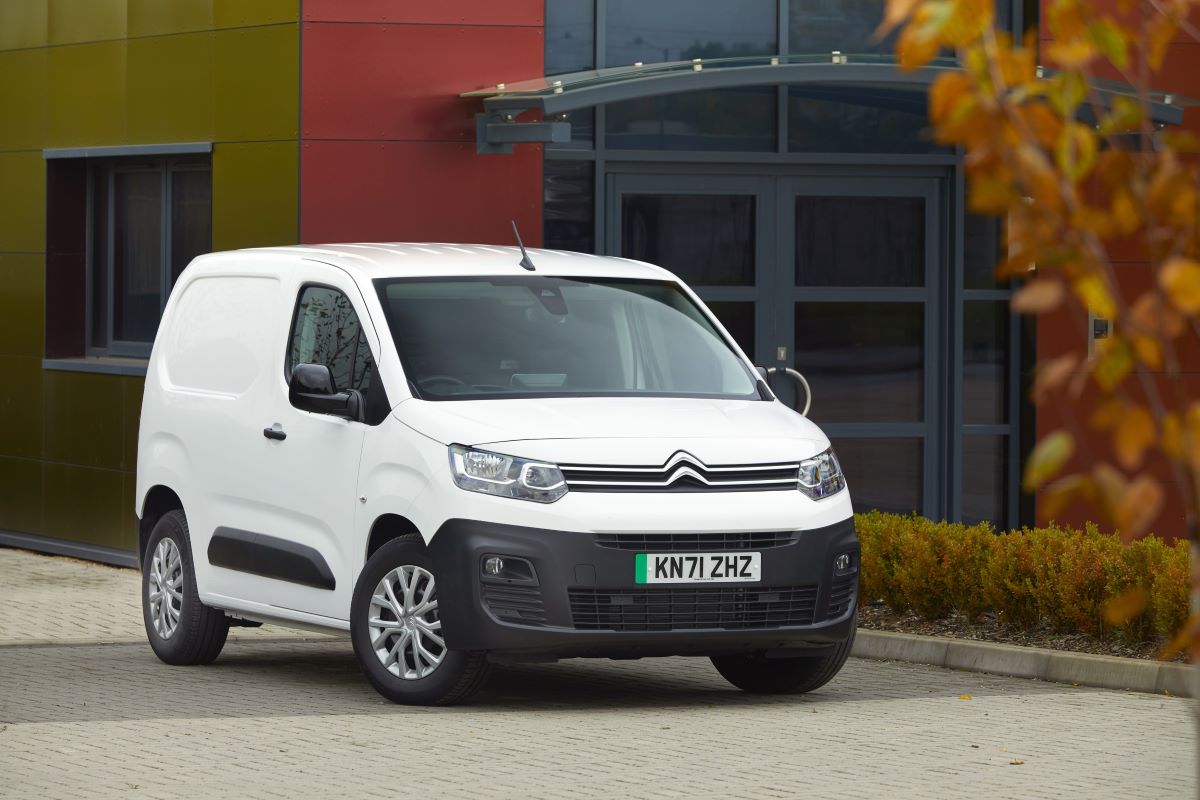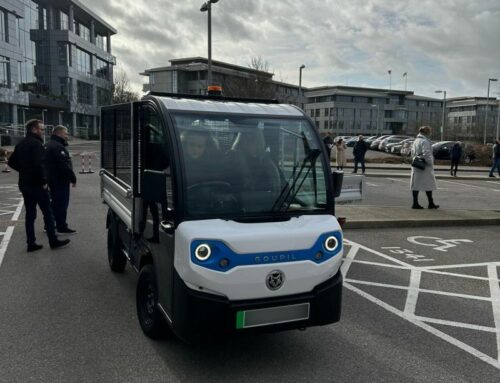What is it?
It’s the latest iteration of Citroën’s popular Berlingo small van and it’s electric. With the Government announcing a two-year extension of plug-in van and truck grants, now’s a good time to be thinking about switching to electric.
Last year, industry figures showed the UK had the highest number of plug-in electric vans sold in Europe, and there were around four times as many grant applications compared to 2020. Existing grants have supported the purchase of more than 26,000 electric vans and HGVs across the UK since the programme launched in 2012.
With nearly 5% of the UK’s CO2 emissions currently coming from vans, the two-year extension to these grants and the switch to greener vehicles is essential to support the Government’s climate change and air quality commitments.
Certainly Government grants for electric vans and trucks have helped kickstart the market, which now offers more than 30 models of electric vans and trucks which qualify for such schemes. Electric vehicles are becoming more popular and affordable, and the number of available models will continue to rise, allowing more people and businesses to benefit from the lower running costs of greener vehicles.
As well as the extension to grant schemes, the Government has also announced it will continue to allow drivers holding standard car driving licences to drive electric goods vans at a higher weight limit, up to 4.25 tonnes (compared to a 3.5 tonne limit for diesel vans).
This takes into account the additional weight of electric vehicle batteries and makes it easier for businesses and drivers to make the switch.
From 1 April 2022, the threshold to claim the small truck grant of up to £16,000 will be increased from 3.5 tonnes to 4.25 tonnes. Vans up to 4.25 tonnes will be able to claim the large van grant of up to £5,000.
The latest-generation e-Berlingo is the most technically advanced version yet and the switch to electrification does not appear to have harmed the van in terms of practicality.
There are two body lengths, the M model is 4.4 metres long and comes with a 3.3m3 load cube while the XL version, which also comes as a crew van with a second row of seats, is 4.75 metres long and has a carrying capacity of 3.8m3.
The standard length e-Berlingo has a payload of 803kg while longer XL model can carry loads of up to 751kg. The standard model we reviewed comes with a single sliding door mounted on the passenger side – XL versions get twin sliders.
What do we think?
Capacity is everything with a van and the Berlingo’s load space is wide and high and able to accommodate two euro palettes. The rear wheel arches don’t intrude too much into the space which, overall, is practical and very usable with 10 lashing points. The Driver Pro version also gets a hard plastic load protector on the floor.
The electric version of the Berlingo is only available in the brand’s higher spec trim grades; Enterprise Pro and Driver Pro, so they are all come with DAB radio, 8o-inch touchscreen and USB port. Citroen’s gear selector is mounted on the centre console and very easy to use. There is a B mode for maximum regeneration. Dials are analogue and easy enough to read.
What’s really nice is that the cabin is really comfortable as is the driving position.
What’s also really nice is how range has improved over earlier electric Citroen models which often struggled to achieve treble figures, particulary when loaded up. Citroen quotes a WLTP range of 171 miles for the new e-Berlingo, although overnight charges on our 7.5kw wall-charger never achieved more than an indicated 161 – still very useable however, particularly for a city delivery van.

As for equipment, the e-Berlingo comes with plenty of driver assistance systems, such as keyless entry, hill start assist, lane departure warning system, rearview camera, blind spot assist, active safety brake and hill descent control. Air conditioning is also standard on both trim grades while Driver Pro versions also get Connect Nav navigation with Apple CarPlay/Android Auto.
All in all, the e-Berlingo is a very useable, small city van and as businesses are increasingly encouraged to move away from petrol and diesel, new managerial solutions may be needed for some fleets in order to overcome the inherent operational limitations of van electrification.
Peter Golding, managing director at software specialist FleetCheck, said that it was becoming clear that compromises in terms of range and payload would have unavoidable real world impacts for a significant minority of operators.
He said: “Fleets have found that car electrification is a relatively simple affair. Electric cars can simply be substituted for their petrol and diesel equivalents in the vast majority of cases with no real issues.

“However, if you need vans to cover long motorway journeys with a full load on a cold day, and your driver is one of the many who don’t have access to off-street parking and therefore can’t have a charger fitted, then the picture is quite different.
“For some fleets, this means that electric vans are simply incompatible with their current operations. A few are hanging on to see whether hydrogen will emerge as an alternative but that remains a marginal choice because of the absence of refuelling infrastructure. The bottom line is that new operational solutions may need to be found to enable electrification. The way in which your fleet is currently organised and used may no longer be appropriate.”
Golding said that fleets were beginning to discuss a range of possible options, with some very creative thinking being proposed.
“One idea that is gaining some traction is the possibility of using vans as shared transport resources. This could work for courier companies, for example. Instead of three electric vans being used on the same long delivery route, three could be shared across shorter runs.”
Golding said that new approaches may also need to be adopted that would change the working day of employees, building charging times into how their work is structured.
“Most route planning is currently undertaken on the basis that mileage and payload are effectively limitless but that will obviously change. It could be that routes will need to be planned where driver breaks are planned around access to charging points and indeed, this is something that is already happening on fleets where eLCVs are being adopted.
“The fact is that, outside of a few major businesses, electric vans remain something of a rarity and operational experience is so far relatively limited. What is needed is a very open level of discussion about the real world solutions that are enabling fleets to operate most effectively.”
Citroen e-Berlingo Van
Price: From £29,595
Power: 134hp
Range: 171 miles (WLTP)
CO2 emissions: O








Leave A Comment